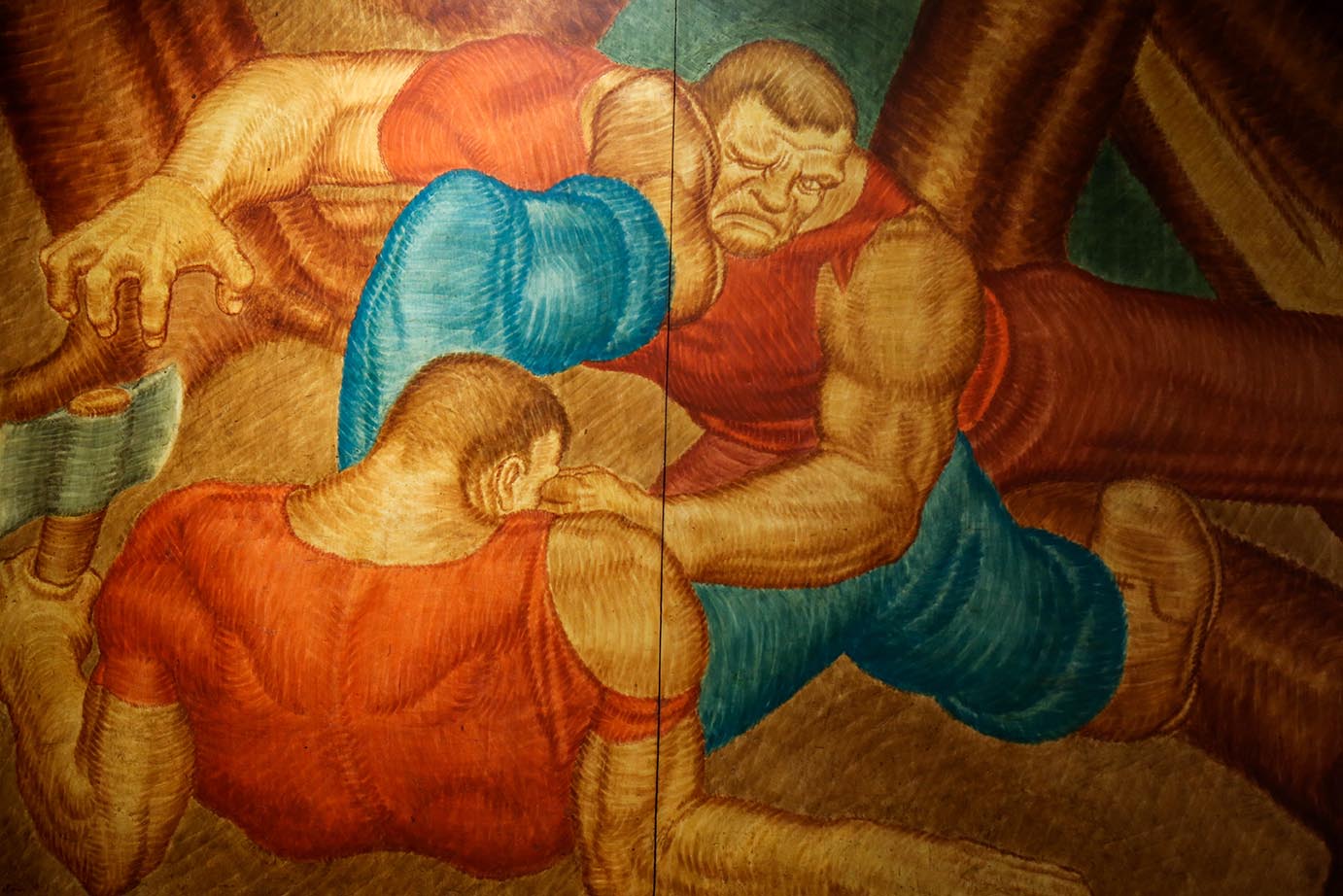
Paul Bunyan Comes to the Union
The New Deal Brings a Legend to the Memorial Union
In 1933, the Public Works of Art Project (PWAP) was created as part of President Franklin D. Roosevelt's New Deal. American tall-tales were at the peak of their popularity, especially those of Paul Bunyan, whose stories of a hard-working giant served as a symbol of vitality and strength. The Memorial Union had been open for four years and a large room on the first floor, void of artwork, was a perfect location for James Watrous to pitch his idea for a set of murals based on the legendary lumberjack.
Watrous painted over 40 cohesive panels for the Paul Bunyan Room in egg tempera, a time consuming and difficult-to-control medium. Although the program was only funded for six months, Watrous spent two years completing the project on his own time. The artwork depicts various stories of men skating on bacon slabs to Babe the Blue Ox—and even contains a scene of the Badger football team fighting the Minnesota Golden Gophers for claim to Bunyan’s ax—all in immersive colorful panels.
“The designs of the murals are fabulous, full of life and movement and bigness. It’s all about bigness" —Joan Gorman, senior paintings conservator at the Midwest Art Conservation Center
James Watrous went on to teach at UW-Madison from 1935-1976 and was an advocate for the arts throughout Madison. When the Memorial Union underwent a multi-year renovation in the 2010s, the Paul Bunyan murals were removed for safe-keeping and reinstalled after the renovation project completed.
-

Video: Paul Bunyan Room Restoration
Paul Bunyan Mural Restoration
-

Detail of the Paul Bunyan Murals
2018 — Murals of Paul Bunyan folklore, painted by James Watrous in the 1930s, returned to Memorial Union’s Paul Bunyan Room on Oct. 5 after being stored and preserved for six years during Memorial Union construction.
Photographed by student photographer, Sam Scribner.
-

Paul Bunyan Room, 2018
2018 — Murals of Paul Bunyan folklore, painted by James Watrous in the 1930s, returned to Memorial Union’s Paul Bunyan Room on Oct. 5 after being stored and preserved for six years during Memorial Union construction.
Photographed by student photographer, Sam Scribner.
-

Paul Bunyan Murals
2018 — Murals of Paul Bunyan folklore, painted by James Watrous in the 1930s, returned to Memorial Union’s Paul Bunyan Room on Oct. 5 after being stored and preserved for six years during Memorial Union construction.
Photographed by student photographer, Sam Scribner.
-

MemorialUnion_MUR_PaulBunyanRoomMural_IMG_4825.jpg
-

Paul Bunyan Room Murals
ca. 1933 – Artist James Watrous paints the Paul Bunyan murals in Memorial Union.